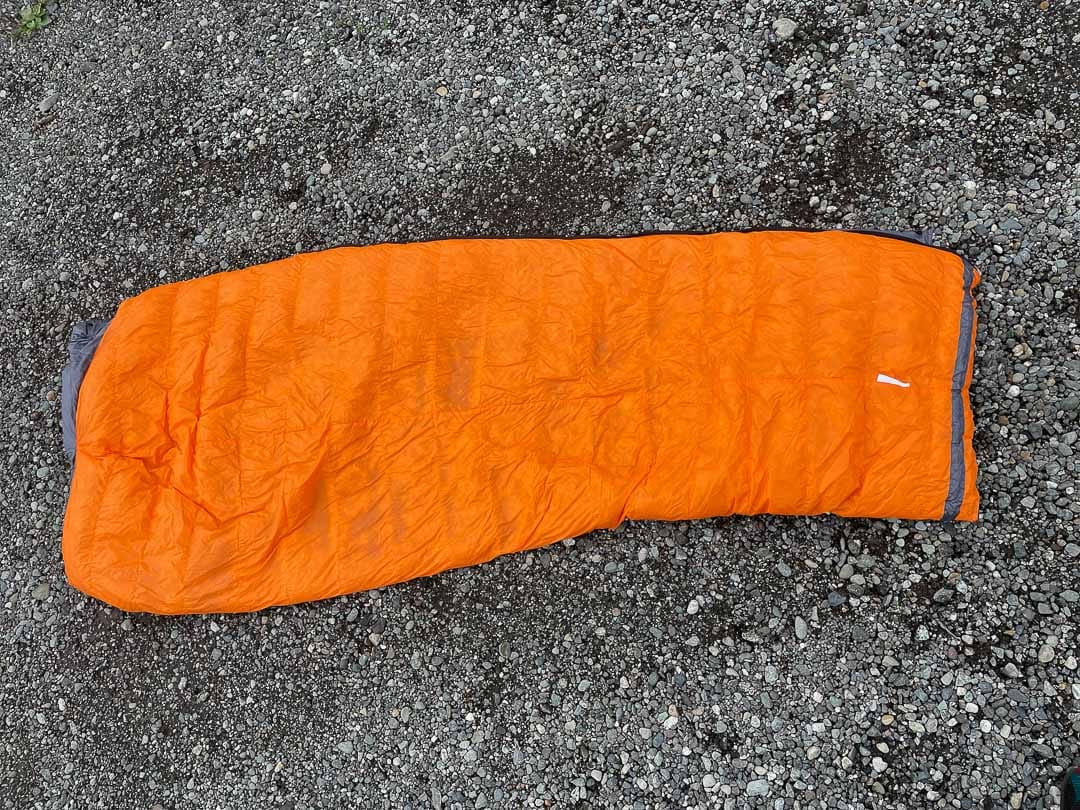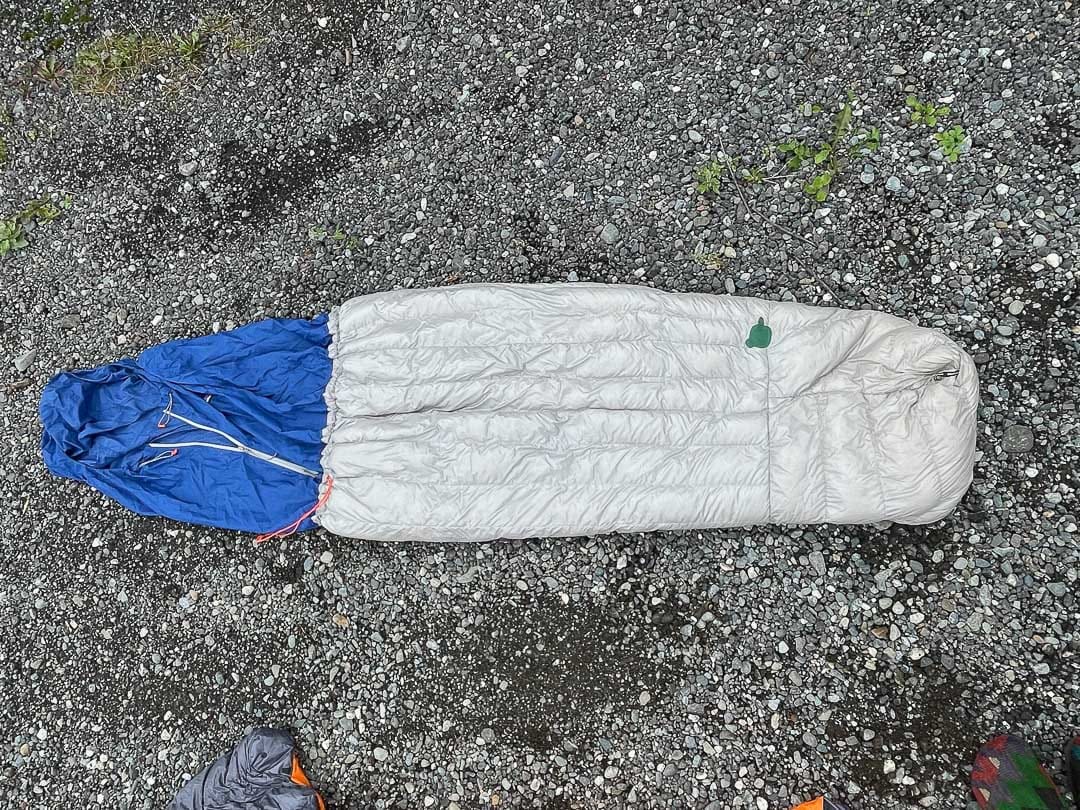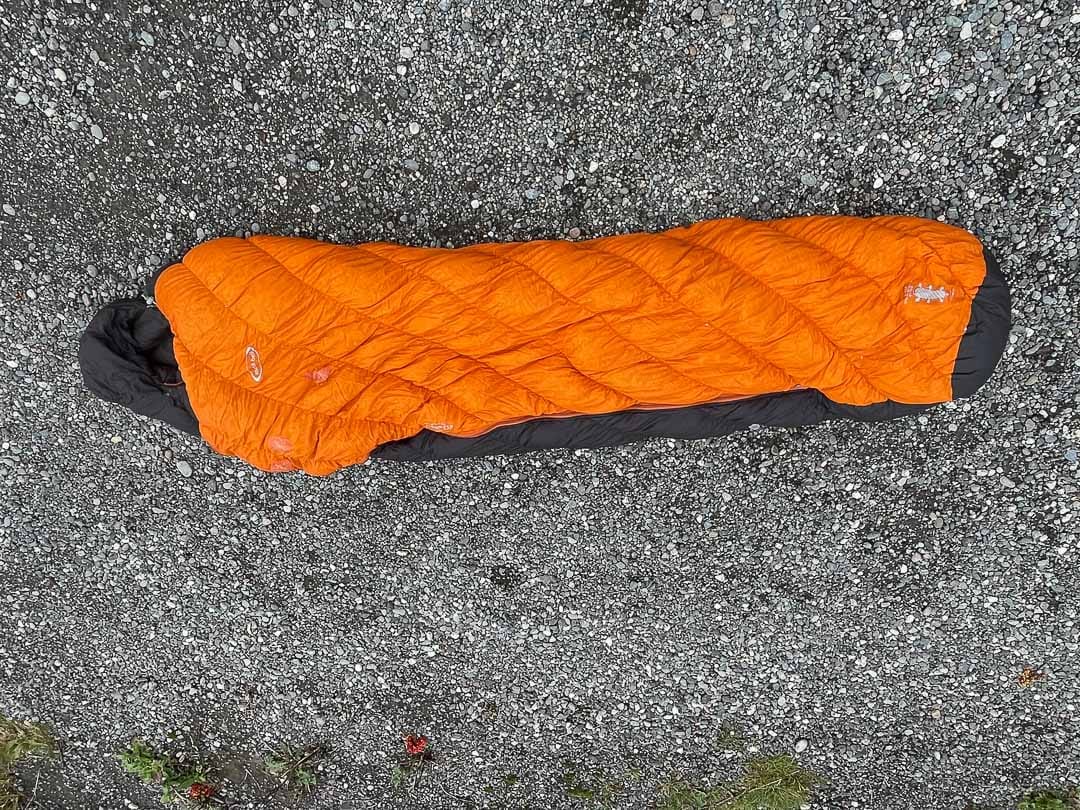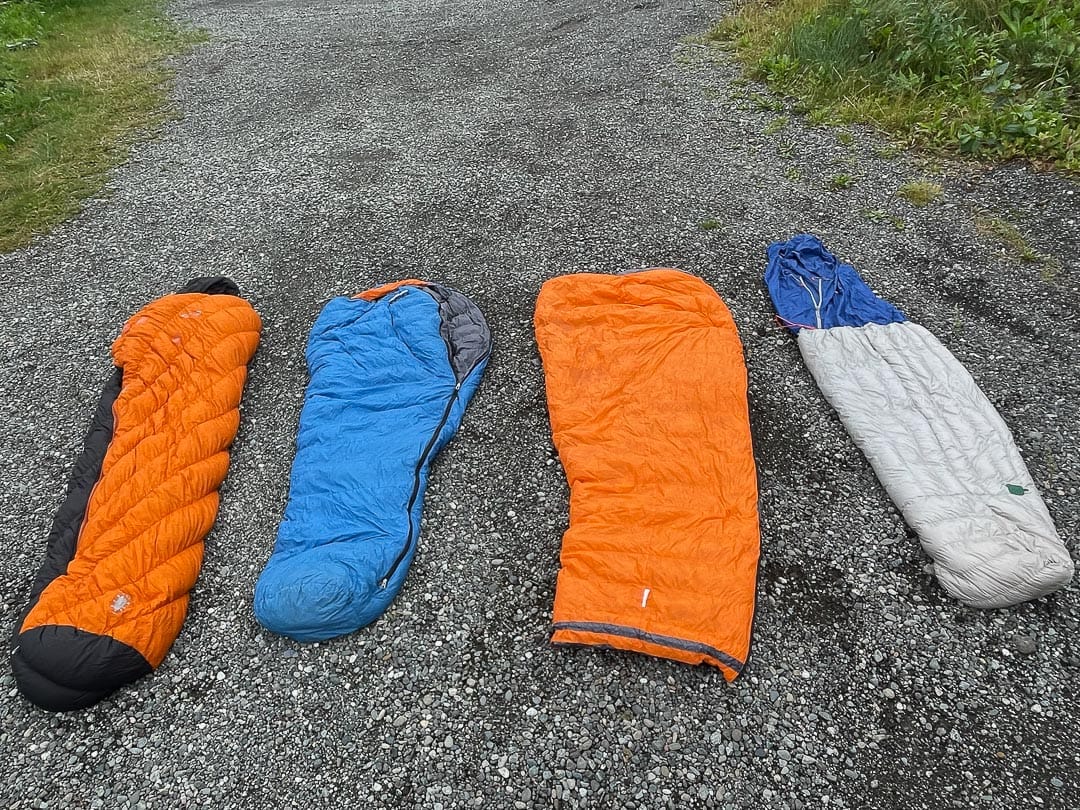A pile of gear on my garage floor spells out a late summer adventure in the Brooks Range. I am packing for a week and half long packraft trip in the Arctic to gather water samples and data on climate change in the far north. We’ll be boating and backpacking in Gates of the Arctic National Park. Before the equinox, the days stay long up north (even into late summer), but by late August, it surely will get cold at night. Hopefully, this means mosquitos will die down for the season, but it also means warmer gear. I am bringing a Feathered Friends 20-degree Hummingbird UL sleeping bag for this trip. At this latitude, snow could very well make an appearance; temps below freezing are likely. This cozy bag is the lightest mummy-style offering from Feathered Friends, packs down to a minuscule size for its weight with 950-fill down, and hits the scales at a mere 680 grams: it’s an excellent stay-warm tool for backpacking, light and fast ski traverses, and those in-between season trips here in Alaska.

Feathered Friends products are incredibly simple, effective, and addicting. This makes the heavy price tag (the Hummingbird runs $609) worth it—I will be comfy.
The Hummingbird UL is my go-to three-season bag. Laying it out on the garage floor gives me a chance to reflect on my sleeping bag shelf and share a few thoughts on an Alaskan’s bag quiver.

Summer System
I have long struggled in the summer months with finding the right sleeping system. I like sleeping cold, but it can get too cold up here even in the warmer months. It can also get too warm. For years, I used an old 30-degree Marmot bag that worked well, but it never quite fit the bill. These past couple of seasons, I have switched to the quilt lifestyle and am never going back. I now use a 40-degree Feathered Friends Flickr UL Wide quilt. 950-fill down at just over 500 grams feels great in the pack, but even more, I love the versatility of a quilt over the bag when conditions allow. Use it as a blanket when it’s cold; tie it to a pad for more security; zip it up and cinch down the toe when the temp drops. The UL is wide enough for two people to squeeze under if that’s your vibe. I also like adding the quilt to the systems below if I need an in-between or warmer weight.
Three-Season
I already shared my go-to three-season bag (the Hummingbird UL). If I need more versatility, I add a liner (and an old Capilene bag liner) or a bag cover. I have a Montbell Breeze Dry-Tec cover that weighs 180 grams, adds a good bit of warmth, and waterproofs my system. I’ll add the cover if I am sleeping out or stretching the season.

The other addition in my three-season category is the Patagonia Hybrid. This sleeping bag is a half bag with an upper uninsulated cover. The hybrid weighs only 490 grams, sports a half zipper, a well-designed wide foot box, 850-fill down lower, and reinforced interior fabric. The lower is warm enough for cold weather, so the temp on these things comes down to what puffy jacket comes along. I’ve never taken this out on a long trip; it’s just not comfortable enough for me to commit. But on quick missions, especially when no tent is involved, it’s small, light, and saves on redundancy when a puffy is already included. It’s been up 16,237ft Mount Sanford, out on the Harding Icefield, and been a go-to for overnighters with a goal.
The Cold and Dark
Okay, so what about the winter? For a while now, my expedition bag has been the Montbell Down Hugger 800 Expedition. I have the older model with diagonal baffles coming in at 1500 grams, but the newer seamless design sheds nearly half a pound. 800-fill down, draft tube, ballistic Airlight Nylon that feels super cozy, and plenty of little touches make this oh-so nice. The older design had what Montbell called “Super Spiral Stretch,” think 45-degree stitching that allowed a ton of wiggle room when needed but hugged your body for warmth. I have used this bag well below zero. It’s been up Denali in the spring, out in the subarctic in winter, and on plenty of mountain trips for me to have full confidence in it. The bag is ISO tested at -5, but it feels warmer than the -15 bag I replaced when I bought it. I like this weight because, on extended winter-ish trips, I have big down pants and a mega puffy, so I can also stack on the down if it gets really cold. My coldest night in the UL Down Hugger Expedition was around 40 below. I woke up cold, but hey, it was 40 below, and I didn’t freeze.

My dad’s old proper 40-below Marmot Penguin still makes an odd appearance now and again, but if I am going tochange things up, I am more likely to add the quilt to one of my other bags.
Any quiver helps pick out the right tool for the job—skis or sleeping bags alike. I like having a couple of specialists in the mix, like my skimo skis or my hybrid bag. I also like versatility—a quilt is way more than a niche item and weighs nearly nothing, and it lets you add warmth to other bags. Then, of course, there are the daily drivers, the 95 underfoot skis, and the 20-degree bag. The warmth here depends on where you live, but make it as comfy as possible. In my experience, when choosing a go-to, people tend to go too warm and then don’t sleep well (anyone who’s been on a hut trip in Colorado knows well the ruckus in the middle of the night as folks wonder why they have winter bags next to a roaring stove in a hut that rarely dips below 50 degrees). Consider a colder bag with an optional liner or cover. On the top end, the pow skis,or the winter bag should inspire confidence.
That’s what I got. Now it’s time to go faff with my pile of clothes and count calories on ramen packets before starting my drive north.
…What works for you all?






Leave a Reply
You must be logged in to post a comment.